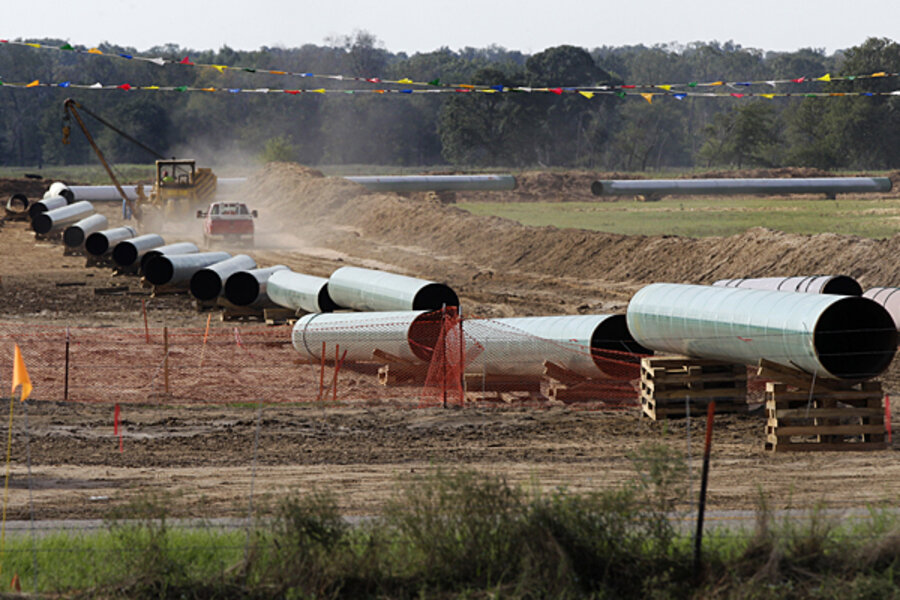Keystone XL pipeline study puts ball in Obama's court
Loading...
[UPDATE: This story has been updated to reflect the release of the Keystone XL environmental impact statement]
The US State Department released its final Keystone XL environmental impact statement Friday afternoon, triggering a 90-day deadline for President Obama to make a final decision on the controversial oil pipeline.
Keystone XL will not pose a significant environmental threat, Friday's report concludes, echoing past studies by the State Department. That seemingly paves the way for Mr. Obama to eventually approve the pipeline, ending more than five years of debate over what has become a flash point in US energy.
Environmentalists strongly oppose the proposed 875-mile pipeline, which would transport heavy crude oil from Canadian tar sands (also known as oil sands) to Nebraska and onward to Gulf Coast refineries. Keystone XL would significantly increase carbon emissions, environmentalists say, and prolong US dependence on fossil fuels that are a primary cause of climate change. They also point to alleged conflicts of interest between the company behind the pipeline and the third-party contractor who led its environmental review.
"By letting the oil industry influence this process, Secretary [John] Kerry is undermining his long-established reputation as a leader in the fight against climate change," Erich Pica, president of the environmental group Friends of the Earth, said in a statement. "President Obama can end this charade; sufficient scientific data exists to justify denying the Keystone XL pipeline."
The State Department inspector general is looking into those allegations.
Backers of the pipeline say it is a necessary addition to a North American energy infrastructure that has lagged behind an oil and gas production boom. It would create tens of thousands of jobs throughout the supply chain, according to the oil and gas industry and other supporters, and bring in needed oil from a nearby, stable ally.
“Getting more oil from our northern neighbor just makes sense," Reid Porter, a spokesman for the American Petroleum Institute, said in an e-mailed statement. "This oil is being and will continue to be produced. It will be managed better in the U.S. and Canada than other countries seeking this oil – not to mention the [greenhouse gasses] emitted to transport it there."
In a previous draft version of the report issued today, the State Department seemingly struck a middle ground. The pipeline would not affect life-cycle greenhouse gas emissions, the draft concluded, because Canada's greenhouse-gas-intensive oil sands would be developed with or without it. Job gains would be modest – 42,100 average annual jobs across the US over one or two years of construction and then 35 permanent and 15 temporary jobs in the operation phase. That report was criticized by environmentalists and the US Environmental Protection Agency, who said it understated the pipeline's potential impact on global carbon emissions.
The State Department leads a review of the project because it crosses an international border, but Obama will make a final national interest decision. In a June speech on climate change, President Obama broke a long silence on the pipeline, saying he would approve it only if it "does not significantly exacerbate the problem of carbon pollution." In last week's State of the Union address, Mr. Obama made no mention of Keystone XL but spoke strongly of supporting North American oil and gas production while taking strong efforts to combat climate change.
"[T]he debate is settled," the president said. "Climate change is a fact. And when our children’s children look us in the eye and ask if we did all we could to leave them a safer, more stable world, with new sources of energy, I want us to be able to say yes, we did."
Federal agencies now have 90 days to comment before the president makes a final decision.






